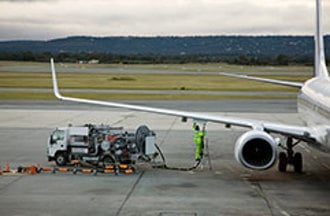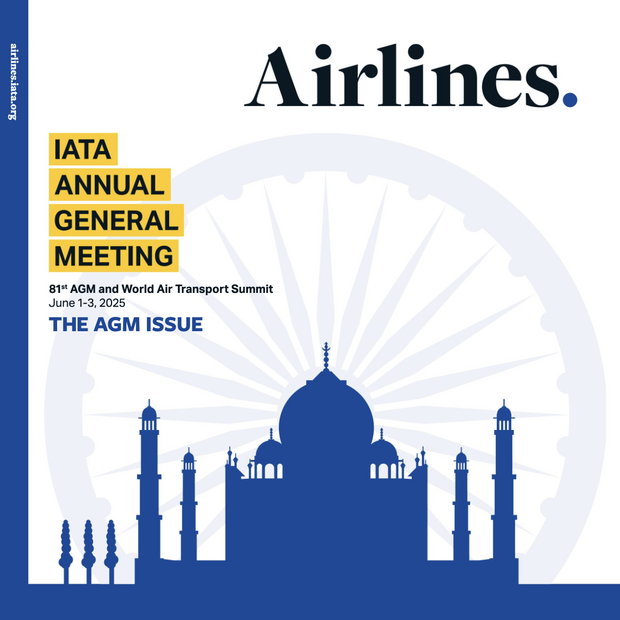
Translations: 国际航协:SAF销量增长但仍需加大供应 (pdf)
Geneva – The International Air Transport Association (IATA) announced estimates for Sustainable Aviation Fuel (SAF) production.
In 2023, SAF volumes reached over 600 million liters (0.5Mt), double the 300 million liters (0.25 Mt) produced in 2022. SAF accounted for 3% of all renewable fuels produced, with 97% of renewable fuel production going to other sectors.
In 2024 SAF production is expected to triple to 1.875 billion liters (1.5Mt), accounting for 0.53% of aviation’s fuel need, and 6% of renewable fuel capacity. The small percentage of SAF output as a proportion of overall renewable fuel is primarily due to the new capacity coming online in 2023 being allocated to other renewable fuels.
“The doubling of SAF production in 2023 was encouraging as is the expected tripling of production expected in 2024. But even with that impressive growth, SAF as a portion of all renewable fuel production will only grow from 3% this year to 6% in 2024. This allocation limits SAF supply and keeps prices high. Aviation needs between 25% and 30% of renewable fuel production capacity for SAF. At those levels aviation will be on the trajectory needed to reach net zero carbon emissions by 2050. Until such levels are reached, we will continue missing huge opportunities to advance aviation’s decarbonization. It is government policy that will make the difference. Governments must prioritize policies to incentivize the scaling-up of SAF production and to diversify feedstocks with those available locally,” said Willie Walsh, IATA’s Director General.
CAAF/3 outcome
The Third Conference on Aviation Alternative Fuels (CAAF/3) hosted by the International Civil Aviation Organization (ICAO) agreed a global framework to promote SAF production in all geographies for fuels used in international aviation to be 5% less carbon intensive by 2030. To reach this level, about 17.5 billion liters (14Mt) of SAF need to be produced.
“Governments want aviation to be net zero by 2050. Having set an interim target in the CAAF process they now need to deliver policy measures that can achieve the needed exponential increase in SAF production,” said Walsh.
- Demand is not the issue: Every drop of SAF produced has been bought and used. In fact, SAF added $756 million to a record high fuel bill in 2023. At least 43 airlines have already committed to use some 16.25 billion liters (13Mt ) of SAF in 2030, with more agreements being announced regularly.
- Unlocking supply to meet demand is the challenge that needs to be solved: Projections are for over 78 billion liters (63Mt) of renewable fuels to be produced in 2029. Governments must set a policy framework that incentivizes renewable fuel producers to allocate 25-30% of their output to SAF to meet the CAAF/3 ambition, existing regional and national policies as well as airline commitments.
Policy Objectives
Effective production incentives for SAF should support the following objectives:
- Accelerating investments in SAF by traditional oil companies
- Ensuring renewable fuel production incentives encourage sufficient SAF quantities
- Focusing stakeholders on regional diversification of feedstock and SAF production
- Identifying and prioritizing high potential production projects for investment support
- Delivering a global SAF Accounting Framework
Unlocking Diversification
Approximately 85% of SAF facilities coming on line over the next five years will use Hydrotreatment (HEFA) production technology, which relies on inedible animal fats (tallow), used cooking oil and industrial grease as feedstock. Limited quantities of these necessitate policies to:
- Diversify SAF production by increasing production through pathways already certified, in particular the Alcohol-to-Jet (AtJ) and Fischer-Tropsch (FT) which use bio/agricultural wastes and residue.
- Promote investments in, and the fast-tracking of certification for, new SAF production pathways currently in the developmental phase.
- Identify more potential feedstocks to leverage all SAF technologies to provide diversification and regional options, including those with side-benefits such as environmental restoration.
Passenger Support
A recent IATA survey revealed significant public support for SAF. Some 86% of travelers agreed that governments should provide production incentives for airlines to be able to access SAF. In addition, 86% agreed that it should be a priority for oil companies to supply SAF to airlines.
For more information, please contact:
Corporate Communications
Tel: +41 22 770 2967
Email: corpcomms@iata.org
Notes for Editors:
- IATA (International Air Transport Association) represents some 350 airlines comprising over 80% of global air traffic.
- You can follow us on X for announcements, policy positions, and other useful industry information.
- Fly Net Zero

